20+ SAMPLE Project Planning
-
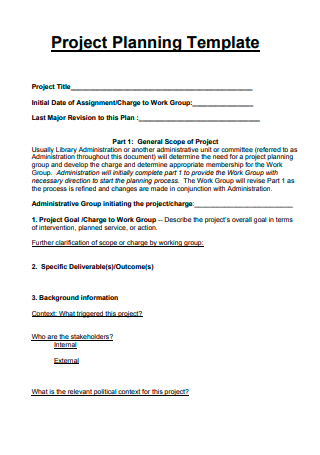
Project Planning Template
download now -
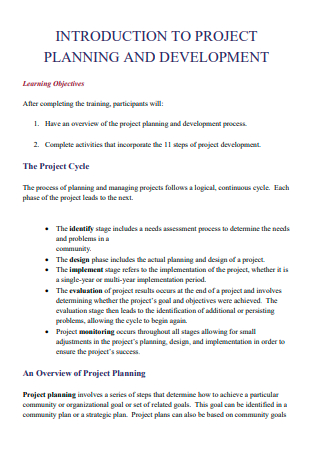
Project Planning and Development
download now -
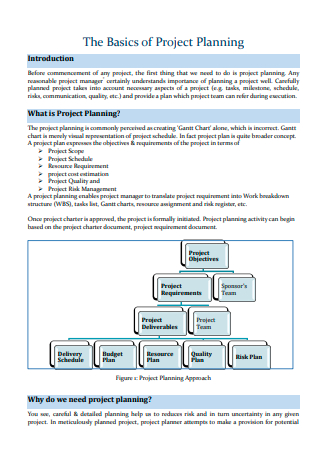
Basic Project Planning
download now -
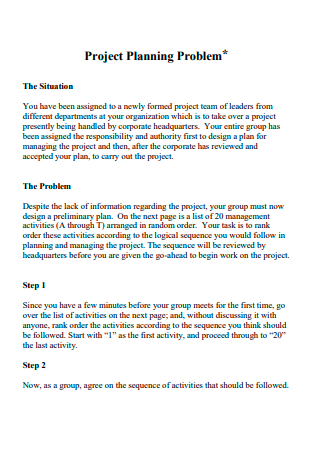
Project Planning Problem
download now -
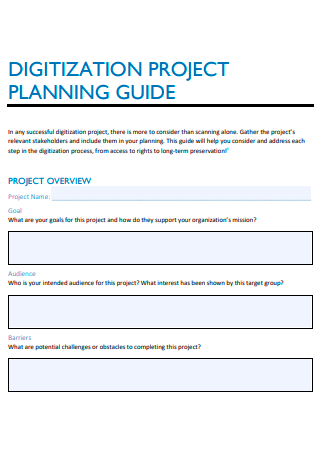
Digitization Project Planning
download now -
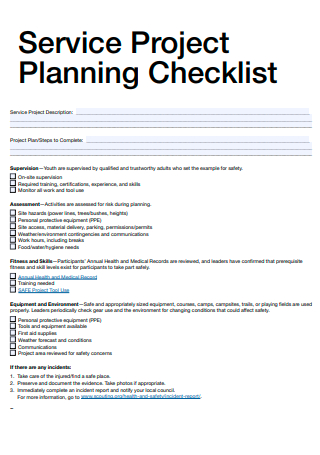
Service Project Planning Checklist
download now -
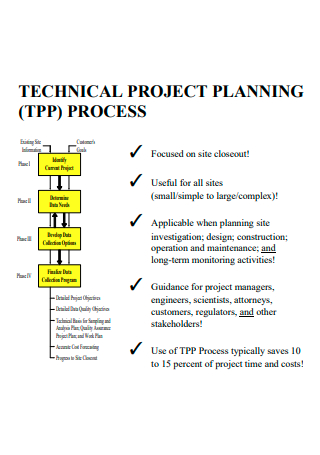
Technical Project Planning Process
download now -
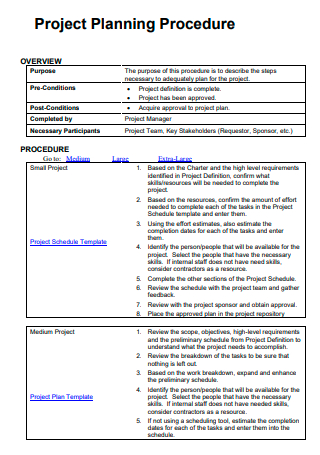
Project Planning Procedure
download now -
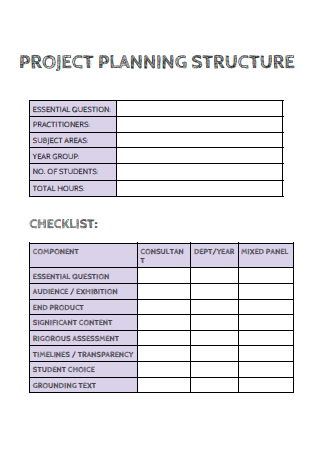
Project Planning Structure
download now -
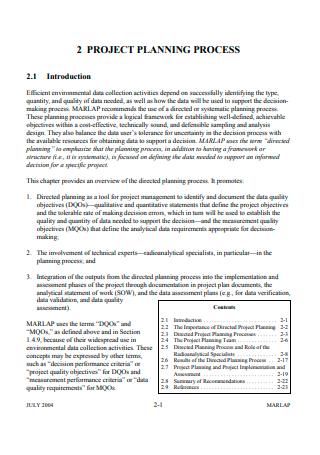
Project Planning Process
download now -
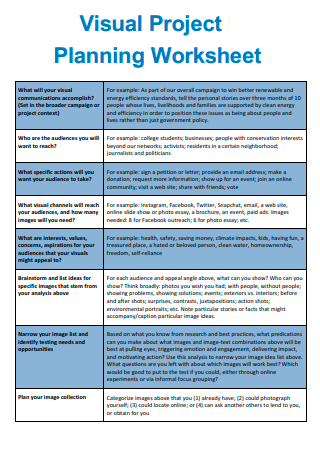
Visual Project Planning Worksheet
download now -
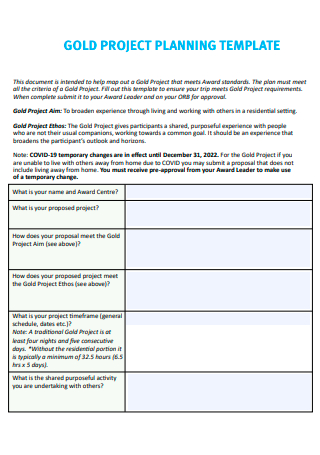
Gold Project Planning
download now -

Digital Project Planning Worksheet
download now -
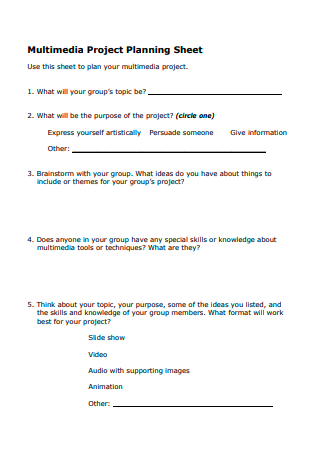
Multimedia Project Planning Sheet
download now -
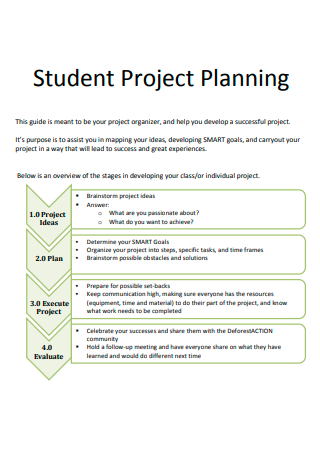
Student Project Planning
download now -
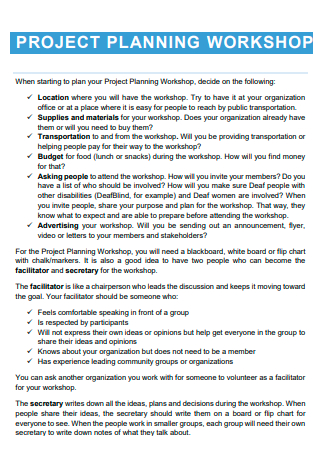
Project Planning Workshop
download now -
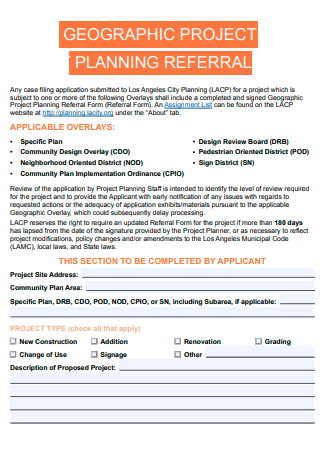
Geographic Project Planning Referral
download now -
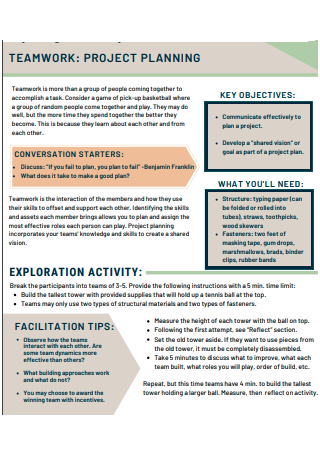
Team Work Project Planning
download now -
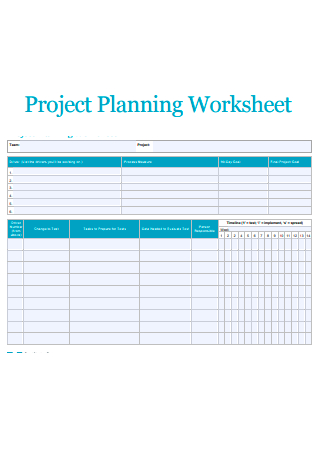
Project Planning Worksheet
download now -
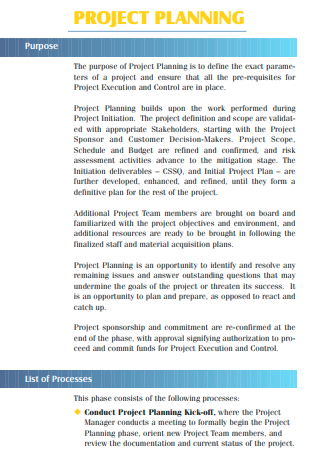
Project Planning Example
download now -
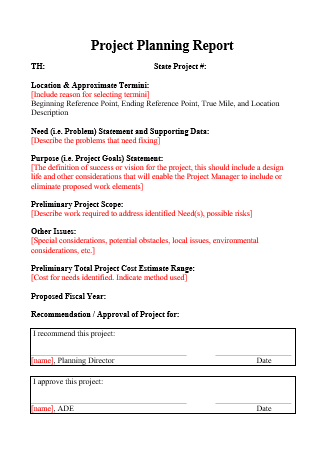
Project Planning Report
download now
What Is Project Planning?
Project management involves using schedules such as Gantt charts to plan and then report progress within the project environment. Planning a project can be accomplished manually or through project management software. According to statistics, 73% of organizations employing formal project management approaches consistently or frequently achieve their objectives.
Benefits of Project Planning
When a company decides to start a project, one of the first things team leaders must do is make a project plan. Making a good strategy for a project can be quick and easy, or it can be challenging and take a long time. It depends a lot on what the project is. No matter what, you can’t say enough about how vital project planning is. Planning a project is not just another step in managing a project. It’s one of the essential parts of the process as a whole. Let’s look at why planning a project is so important, not just for the project itself but also for the whole company and its employees.
Elements of Project Planning
There are crucial components that must be included in a project plan. Keep in mind that working with a poor project plan is equivalent to operating without one. Timeline, budget, and deliverables must be specified to demonstrate your project’s scope. You will find some crucial elements of a project plan that you must not neglect.
1. Outline business case and stakeholder needs
Before beginning your project, it is necessary to match the project’s objectives and requirements with those of your team and business. How crucial is this initiative to achieving the organization’s goals? How does it relate to the annual or quarterly objectives? What do the interested stakeholders anticipate? These are some questions you might ask to outline and connect the new project with the needs of your company and stakeholders.
2. List of project needs and objectives
Even though a project plan is a dynamic set of papers that will undoubtedly alter during the project, it is vital to set a determined course to achieve the project’s objectives. As a project manager, you should examine the needs of all parties engaged in the project and define the requirements necessary to meet those demands. What objectives must be met for the project to be successful? What characteristics and skills should the deliverables possess? It is acceptable to modify specific project plan components as the work advances.
3. Project scope statement
The project scope statement is an essential component of a project plan. It serves as the basis for the remainder of the project plan. The project manager finalizes and documents all project details in the scope statement to ensure everyone is on the same page. This statement explains the project’s steps and requirements. It is typically used to obtain agreement and support from external project stakeholders.
4. List of deliveries with expected due dates
You should now have a better concept of the deliverables and outcomes that will be delivered to finish this project after preparing the project scope statement. Then you should write down what tasks and deliverables each team member is responsible for and when they are due. This stage is usually best accomplished using a task breakdown structure. To map out all of the project work, allocate to teammates, set due dates, and identify any dependencies, you can use a simple list, flow chart, spreadsheet, or Gantt chart. It’s also essential to identify which deliverables or tasks will need to be approved by external stakeholders in this breakdown to avoid delays caused by task dependencies or reviews and approvals.
5. Detailed project plan
A widespread misperception regarding project plans is that the project plan is identical to the project timeline. The project timeline is merely one of the numerous components of a project plan. A project schedule estimates the time required to accomplish each work while allowing for slack and dependencies. It is a detailed calendar of all the necessary chores and deadlines. It indicates the project’s duration, who is responsible for what, and when each task begins and concludes.
6. Risk assessment and management strategy
During the planning phase, it is essential to evaluate the associated risks. Currently, is your organization stable? What is your tolerance for risk? What potential risks and opportunities could result from performing this project, and what is your mitigation strategy? Possible events mentioned in your project risk plan may not occur, but they might substantially impact the project’s outcome if they did. Risk management involves identifying the risk itself and building risk management plans to describe how the team should react if certain occurrences occur. Risks are unavoidable. Hence the best project plans include detailed risk management sections. If you can identify risks early on in a project, you can manage them and boost your chances of success.
7. Defined roles and responsibilities
Clarify the duties of every member of the project team, including external stakeholders. Various tasks may involve reviews and approvals from specific stakeholders, albeit most of the project’s essential stakeholders are often not involved in all areas. A project sponsor provides funding; they may need to study and approve crucial components of the plan. They may also need to assess and approve project components. Project managers conceive, implement, and oversee the project plan. And the project team completes the duties and constructs the final product. Other contributors to a project may include auditors, quality and risk analysts, procurement experts, etc. They may need to approve portions of the project plan that pertain to their areas of expertise, such as the quality or procurement plans.
How To Obtain a Successful Project Planning
A good strategy is easily communicated to all parties involved and is most effective when revisited frequently. It is a waste of time to outline a plan and never discuss it with your team again. You can plan your project using a primary Google document or project management software. If you are an entrepreneur or work in a fast-paced startup, you may initially believe that project management requires too much time. However, you will save a significant amount of time and resources if you record your project plan immediately and use it as a guide to keeping you and your team on track. Here are seven fundamentals of practical project planning to help you get started.
1. Consider your plan a road map for stakeholders.
Every project requires a road map with clearly stated objectives that should not alter after the first phase is done. During the initial project planning phase, all stakeholders who will profit from the outcome or be involved in executing the project should be identified, and their demands should be stated. Do not presume that you understand the requirements and objectives of each stakeholder. Before you get too far into recording your project plan, make sure you have a thorough understanding of the project and the abilities and resources of each team member.
2. Create a list of project deliverables.
Make a list of what needs to be done. This list should break down the larger project into smaller tasks that can be given to specific team members. You should also include estimated due dates for each deliverable or task. Make sure you know how each deliverable will be approved and that you write it down. If your project is for a customer outside of your company, make sure you understand how their internal approval process works, so you aren’t surprised by delays or slowed down by having to sort through different opinions.
3. Communicate with your team
Identify by name all individuals and organizations engaged in each deliverable or task and describe their roles in total. Otherwise, miscommunication might result in delays and circumstances where team members must repeat their work. Hold a launch meeting to discuss the team’s desired strategy. Request their assistance in determining the optimal method for completing the task. This will increase your efficiency, but it will also help you get their support because they will feel more ownership over the process. Using a project management platform can aid in keeping everyone on track and centralizing papers and interactions. If you use email to talk about projects, consider adopting a team inbox email solution that allows you to assign emails that require project-related attention to the right team members, rather than continuously passing large conversation threads back and forth.
4. Identify dangers
Identify the hazards associated with your project. Consider what you will do if anything takes much longer than anticipated or if expenditures are significantly higher than expected. You do not need to prepare a particular plan of action for every possible adverse event, but you should spend time with your team considering what could go wrong. Then, you may do all possible to mitigate these risks from the outset rather than being surprised later. Budgeting decisions can also be affected by risk concerns.
5. Establish a budget
Attached to your list of project milestones and deliverables should be pricing and budget information. Resist the temptation to award high monetary amounts to large projects without specifying how the money will be used. This will help your team comprehend the available resources to complete the task. These figures may represent ranges rather than absolutes when establishing your initial budget. It may be required to obtain estimates from many sellers for specific items. It can be helpful to include a brief description of the agreed-upon project scope in your budget paperwork if you need to make adjustments to the more significant project due to budgetary limits or if your vendor does not deliver what you intended.
6. Add milestones
Use your list of deliverables as a foundation for adding milestones and tasks that must be performed to reach the broader objective. Establish acceptable timeframes, considering the project team members’ productivity, availability, and efficiency. Consider your milestones using the SMART framework.
7. Establish criteria for progress report
These may be monthly, weekly, or daily reports. Ideally, an online or offline collaborative workspace should be established for your project so that all parties may track its development. Ensure you have a communication plan; document how frequently you’ll update stakeholders on progress and how you’ll convey information, such as weekly meetings or daily emails. Use the framework you established while identifying milestones to drive your reports. Try not to reinvent the wheel or waste time writing new reports every time you need to discuss progress.
FAQs
What is the planning phase of a project?
During the planning phase, the project manager collaborates with the project team to determine the technical design, task list, resource plan, communications strategy, budget, first schedule for the project, and the roles and responsibilities of the project team and its stakeholders.
What are the goals of project planning?
The intended outcomes of a project are its objectives. This may involve deliverables and assets and less tangible goals such as enhancing productivity or motivation. Your project’s objectives should be measurable, attainable, and time-bound.
What is plan formation?
Plan formation is an iterative process that starts with setting planning goals, evaluating management measures that meet these goals, coming up with possible alternatives that meet the goals, eliminating plans that don’t meet comparison criteria, and deciding which plans will be implemented.
Effective project planning and management are organized and communicating effectively with your team and stakeholders. Consider where and how you will store all the project-related materials and resources, and if possible, put everything in a single location. Best of luck!
